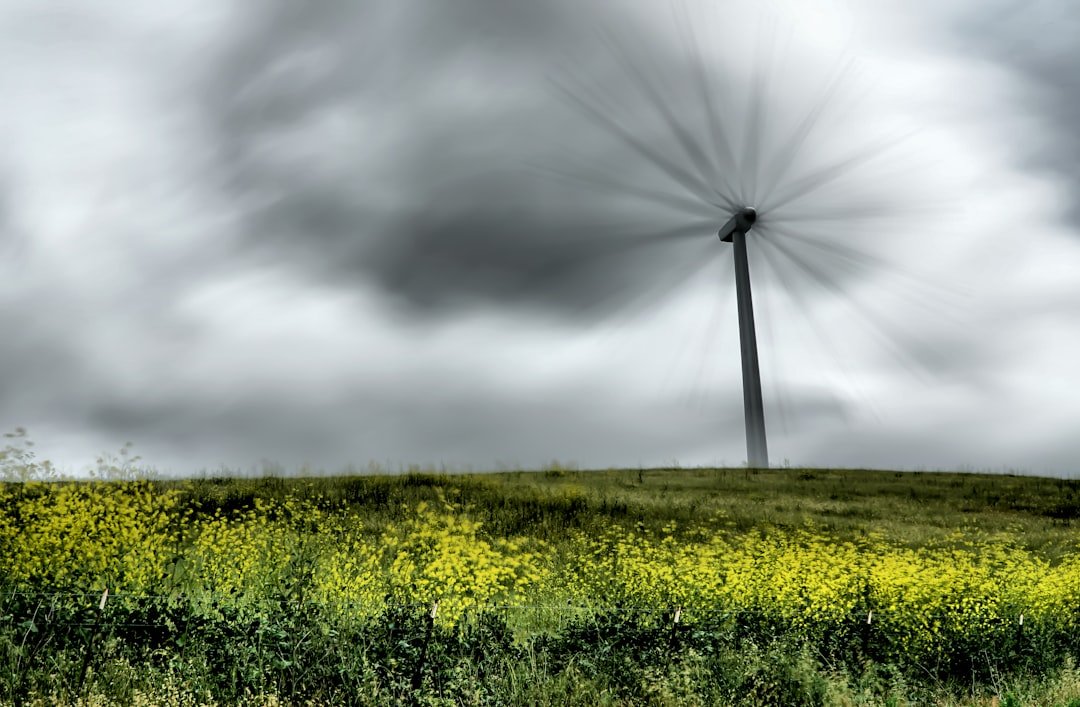The Art of Composting: Common Errors and Environmental Advantages Composting is a natural process that turns organic waste into nutrient-rich soil, which farmers & gardeners alike refer to as “black gold.”. In addition to aiding with waste management, this traditional method is essential for improving soil health and advancing sustainable agriculture. Composting lowers greenhouse gas emissions by recycling yard waste, kitchen scraps, & other organic materials, which lessens the quantity of waste dumped in landfills.
Key Takeaways
- Composting reduces waste and benefits the environment by creating nutrient-rich soil.
- Avoid using materials like meat, dairy, and pet waste in your compost pile to prevent odors and pests.
- Maintain a proper balance of green (nitrogen-rich) and brown (carbon-rich) materials for efficient composting.
- Keep your compost pile moist, but not too wet, to promote decomposition and prevent bad odors.
- Regularly turn or aerate your compost pile to ensure proper airflow and decomposition.
Composting offers more environmental advantages than just reducing waste; it also strengthens soil structure, retains more water, & supports a flourishing community of helpful microorganisms. Also, composting aids in the decrease of chemical fertilizers used in farming. Compost adds vital nutrients to the soil, fostering healthier plant growth without the negative side effects of synthetic fertilizers. In addition to promoting biodiversity, this practice aids in the fight against soil erosion and degradation. As environmental concerns gain more attention, more people and communities are adopting composting as a workable way to support sustainability and safeguard the environment.
Using inappropriate materials can lead to issues. Although adding any organic waste might seem harmless, some materials can impede the composting process or even have unintended consequences. For example, meat, dairy, and fatty foods can draw pests and produce unpleasant smells, turning the compost pile from a useful resource to a nuisance. Contamination risks and pathogens. These substances may also introduce pathogens that could survive the composting process, endangering both the environment and human health.
Including materials that are not biodegradable, like plastics or treated wood, is another error. These materials can contaminate the compost and prevent it from being used for gardening or landscaping because they do not decompose. Choosing the Right Materials. Use only appropriate materials, such as grass clippings, eggshells, coffee grounds, fruit & vegetable scraps, and dry leaves, to build a successful compost pile. A healthy decomposition process that produces high-quality compost can be ensured by individuals by carefully choosing what goes into the compost pile. Composting effectively requires striking the correct balance between green and brown materials.
| Mistake | Impact |
|---|---|
| Adding meat and dairy products | Attracts pests and creates bad odors |
| Using plastic or non-biodegradable materials | Contaminates the compost and harms the environment |
| Not turning or aerating the compost pile | Slows down the decomposition process |
| Adding diseased plants or weeds with seeds | Spreads diseases and weeds in the compost |
Green materials, such as coffee grounds, vegetable scraps, and fresh grass clippings, are high in nitrogen. Conversely, materials that are brown—such as cardboard, straw, and dried leaves—have a high carbon content. Ignoring this balance is a common mistake made by inexperienced composters, which can result in a slow decomposition process or disagreeable smells. Because of anaerobic conditions, an overabundance of green materials can make the compost pile excessively wet and odorous. On the other hand, a dry pile that breaks down slowly can be produced by an abundance of brown materials. A 2:1 or 3:1 ratio of brown to green materials is frequently mentioned as the ideal ratio.
An ideal environment for microorganisms to flourish and effectively break down organic matter can be created by composters by keeping an eye on this balance & making adjustments as needed, such as adding more browns during wet times or greens during dry ones.
Ignoring the moisture content of their piles is a common error made by many composters. An excessively dry compost pile causes microbial activity to drastically slow down, which results in partial decomposition.
Also, dry piles may compact, which would restrict airflow and further impede material breakdown. An excessively moist compost pile, on the other hand, may produce anaerobic conditions that give it a slimy texture & unpleasant odors. The general health of the compost may suffer as a result of this imbalance. The pile should be kept damp but not soggy, like a wrung-out sponge, to maintain the right moisture levels. Keeping an eye on the moisture content and making necessary adjustments with water or dry materials will help guarantee a healthy compost environment.
Another essential component of successful composting that is frequently disregarded is aeration. In order for aerobic microorganisms that aid in decomposition to thrive, oxygen must be added to the compost pile by turning or aerating it. Insufficient aeration can cause the pile to compact & create anaerobic conditions, which can cause slow decomposition & offensive odors. This step is often completely overlooked by inexperienced composters. Ideally, the pile should be turned every few weeks to help mix materials evenly and encourage quicker breakdown.
This procedure not only improves airflow but also makes it possible to regulate the pile’s temperature more effectively. A compost pile that is properly aerated will heat up more quickly, speeding up decomposition and producing high-quality compost more quickly. Pest-infested or diseased plants are a surefire way to end up in trouble. Adding sick or pest-infested plants to the compost pile is a common composting error. Adding these items to the pile might seem convenient, but it could introduce pests or pathogens that can withstand the composting process. When the finished compost is used in gardens or landscapes, this could cause issues because it could infect healthy plants with diseases or other pests.
The correct way to dispose of sick plants. Diseased plants should be disposed of through municipal yard waste programs or, if permitted by local regulations, by incineration to prevent this problem. By doing this, the chance of diseases or pests spreading to healthy plants is decreased and the diseased plants are handled and disposed of appropriately. Composting at High Temperatures: A Potential Fix.
If you’re determined to compost everything, you can help eradicate pests & diseases by keeping the compost pile at a temperature of at least 130°F for a long time. This necessitates careful temperature control and monitoring of the pile, though, which can be difficult for novices. Composting’s natural advantages are also compromised by the frequent error of using chemicals or artificial fertilizers. A common misconception is that adding these materials will increase the amount of nutrients or hasten the decomposition process.
This approach, however, may be harmful to the environment and the quality of the compost. Chemical fertilizers have the potential to upset the compost pile’s natural microbial balance, creating an unhealthful ecosystem that might not yield high-quality compost. Synthetic fertilizer residues can also damage aquatic ecosystems and contribute to pollution by leaking into groundwater or washing into adjacent bodies of water.
The best course of action is to concentrate on developing a varied blend of organic materials that will naturally supply plants with nutrients and support a healthy soil biology rather than depending on chemicals. Last but not least, a lot of would-be composters ignore regional composting laws and regulations. There may be regional regulations governing what can be composted and the maximum size of a compost pile. In addition to possible environmental harm, breaking these rules may result in fines or other penalties.
People should read local regulations supplied by environmental organizations or municipal waste management authorities before beginning a compost pile. These resources frequently guarantee adherence to local regulations while providing useful information on the best methods for composting at home. Individuals can benefit from their own sustainable gardening practices & make a positive contribution to their communities by following these rules.
To sum up, even though composting encourages sustainable practices and has many positive effects on the environment, people must be careful not to make common mistakes that could undermine their efforts. Anyone can build a successful compost pile that enhances their garden and promotes environmental health by knowing what materials are appropriate for composting, keeping the right ratios of green and brown materials, keeping an eye on moisture levels, aerating frequently, staying away from contaminants and diseased plants, and following local laws. Adopting these methods improves individual gardening projects and helps ensure a more sustainable future for everybody.
When it comes to composting, it is important to be mindful of the potential mistakes that can harm the environment. One related article that delves into revolutionary solutions to solve climate change offers valuable insights into how individuals can make a positive impact on the environment through sustainable practices. By implementing innovative technologies and conservation methods, we can work towards mitigating the effects of climate change and protecting our planet for future generations. To learn more about these revolutionary solutions, check out the article here.
FAQs
What are some common composting mistakes that harm the environment?
Some common composting mistakes that harm the environment include adding meat, dairy, and oily foods to the compost pile, not properly managing the compost pile to prevent odor and pests, and using compostable plastics that do not break down properly.
Why is adding meat, dairy, and oily foods to the compost pile harmful?
Adding meat, dairy, and oily foods to the compost pile can attract pests and create unpleasant odors. These items also take longer to break down and can introduce harmful bacteria into the compost, which can be harmful to the environment.
How does improper management of the compost pile harm the environment?
Improper management of the compost pile, such as not turning it regularly or not maintaining the proper balance of green and brown materials, can lead to the production of methane gas, a potent greenhouse gas that contributes to climate change.
Why are compostable plastics harmful to the environment?
Compostable plastics require specific conditions to break down properly, and most home compost piles do not reach the necessary temperatures to break them down. As a result, these plastics can end up contaminating the compost and the soil, harming the environment.
What are some tips for environmentally-friendly composting?
Some tips for environmentally-friendly composting include using a balanced mix of green and brown materials, avoiding adding meat, dairy, and oily foods to the compost pile, and regularly turning and aerating the compost to promote proper decomposition.



